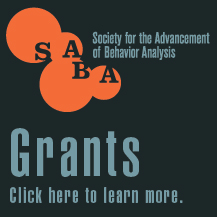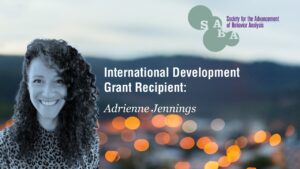Update: Nurturing Brightness Network

By Flora Moura Lorenzo, 2020 International Development Grant Grantee
During the first ten months since the project started, in June 2020, the Nurturing Brightness Network aimed at building an online community targeting professionals from the Brazilian education and health sectors. The project’s title was translated to a similar but not literal expression with a focus on fostering the feeling of belonging among pupils, Escola de Pertencimento [School of Belonging], and its website can be found at http://escoladepertencimento.org. From June 2021, the platform content will be translated to English to reach a broader audience, maintaining the project’s original title.
Website Development
Due to the complexity of the project needs in terms of online navigation and interaction, the costs of hiring a web designer were higher than originally estimated ($890 instead of $300). Alternatively, to ensure that the funds from SABA would cover the other necessary items for the project completion, we decided to develop the platform using a website builder. Thus, a set of unforeseen activities took place in terms of learning the necessary skills to develop the project’s platform with the proper resources to make navigation easy and interactive on computer and mobile devices. To add a professional interface, we hired one designer and one illustrator to create the project’s visual identity and graphic design. The website comprises seven tabs with the following content: (a) general information about the project and member registration, (b) modularized video lessons, (c) interviews, (d) forums linked with each module, (e) a booking tab to schedule discussions about the members’ projects with the platform organizers, (f) a brief description of the project’s foundation, and (g) one tab about the organizers’ educational background and professional experiences.
Content Development
Eight blocks of content were developed in the format of modularized video lessons about conceptual and practical aspects of behavior analytic tools for classroom management and nurturing positive learning processes. The content covered subjects as the basic features of nurturing environments, tips for promoting prosocial interaction, the role of environmental events imbalance in the maintenance of disruptive and on-task behaviors, and an overview of the Good Behavior Game (GBG) features, versions, and effects. The content development process involved (a) a literature search related to both theoretical and practical aspects of each topic, (b) crafting a preliminary version of the content by behavior analysts, (c) reviewing by one behavior analyst and two experts in collective health and emancipatory education, (d) recording, (e) editing, and (f) publishing on the website. Some of the steps were repeated in case of refinement needs. Forums were opened to allow the community members to exchange knowledge and experiences. The titles of the video lessons developed so far are the following: Opening, Minimizing toxic conditions, Promoting prosocial behavior, Limiting opportunities to harmful interaction, Culture, individual, and species, The role of environmental events in learning processes, Balance and imbalance between nurturing strategies and reprimands, Structure and core elements of the GBG, and Brief overview of the GBG effects.
Interviews
To promote access to peer experiences, one Brazilian primary school teacher who implemented a version of the GBG culturally adapted to Brazil from 2014 to 2016 was interviewed. The two-hour discussion covered the teacher’s impressions about the effects of the nurturing strategies embedded in the GBG on pupils’ observable behavior and emotional responses. She also shared her experience with disseminating the project across classrooms within one school. The interview was conducted in January 2021 and is under editing before publishing the final version.
Refinement
Before moving towards large-scale dissemination of the project, we decided it was necessary to make several rounds of content refinement to make sure of the appropriateness of the language, tone, depth, and sensitivity to a broad audience. Besides, we identified the need of enhancing the lecturer media training for asynchronous online content delivery. Thus, the first five blocks of content were recorded and edited three times before their current version was released. We also decided to firstly pilot the website use on a small scale. Hence, we invited prevention policymaking workers and teachers from Campos dos Goytacazes (RJ) to test it. Three meetings were held to establish this partnership, from which the need of complementing the modules with information that allows accounting for the professionals’ participation as working hours was identified. Meeting this criterion would favor career progression through the platform use, which shall add a reinforcing value to it. For this purpose, we hired a programmed learning service to craft: (a) an introduction to each module with an overview of goals, learning outcomes, and expected time for completion, and (b) activities and forum posts for enhancing members’ learning and interaction. This working package is in progress, after which the piloting of the platform use will be resumed. If possible, with the same municipality. Only then we will contact other key agents across the country to favor their engagement in the community, which shall raise the website traffic.
Project First-Year Expenses
To produce the audiovisual files used in the modules, the following equipment was purchased: 01 used Canon EOS 200D ($405), 01 TM2324 lightweight tripod ($79), and 01 used Rode VideoMicro Compact On-Camera Microphone ($25). The items purchased for the website development and publishing were: Wix Premium Plan for website building and hosting ($119), Wix website domain ($15), Vimeo account for hosting videos ($82), Visual identity service ($404), and illustrations ($96). Finally, as part of the content refinement, a programmed learning service ($300) was hired. The project total costs from June 2020 to March 2021 were $1525, being $1000 paid with the grant money. The changes in a part of the budget use were oriented by unforeseen needs for web designing and hosting the platform, and due to flight cancellations related to the pandemic. The equipment would have been purchased in the United States of America, where their costs are lower and more options are available in comparison with Norway, where they had to be bought after the country closed its borders.
Expenditures Planned
The materials, equipment, and services planned to favor the project second-year progress involve: purchasing behavior analytic textbooks related to classroom management and nurturing environments ($168) to use as cultural consequences contingent to coordinated efforts between the platform members, translation of website and modules to English, and purchase of a computer with better storage and graphic card performances.
Unanticipated Difficulties and Strategies Used to Overcome Them
Besides the need of developing web designing skills to keep the project on budget, three other unanticipated difficulties challenged the project development: (a) the lack of previous experience on how complex and time-consuming the processes of creating, recording, and editing video lessons are, (b) the disengagement of the involved municipality that would pilot the website in 2020, likely due to their need of course-structured content at a shorter-term to favor teachers’ engagement, and (c) the pandemic impacts over the group members work and adjustment. To overcome them, we decided to focus primarily on the project content development and refinement before scaling up the website access, to take a course about excellence in online teaching, to hire a programmed learning service to complement the modules with information that allow municipalities to register the platform engagement as part of the professional working hours, and to adjust the project timeline in the face with the pandemic challenges to the project members routines. Moreover, the forum app available in the hired website builder is considerably limited. We plan to embed a more reinforcing alternative for improving users’ experience during the project’s second phase.
Learn more about Flora Moura Lorenzo and her project.



